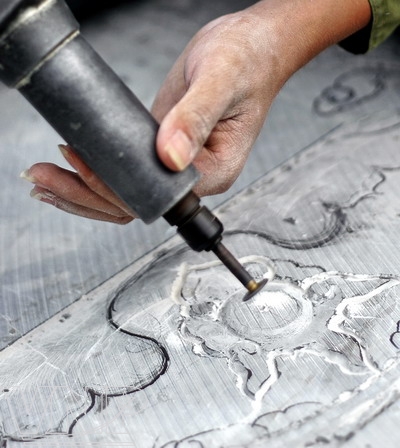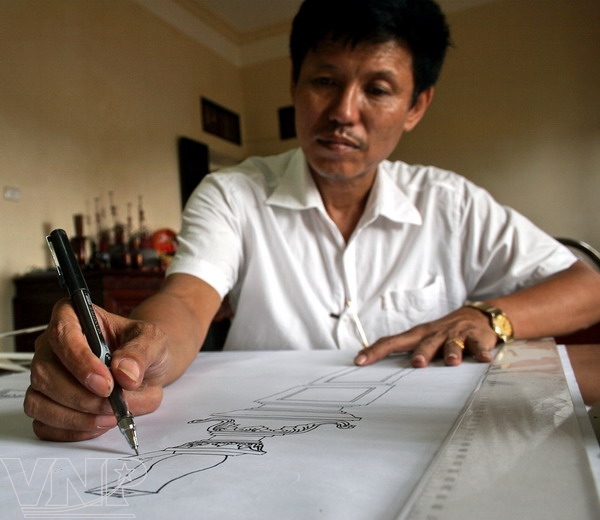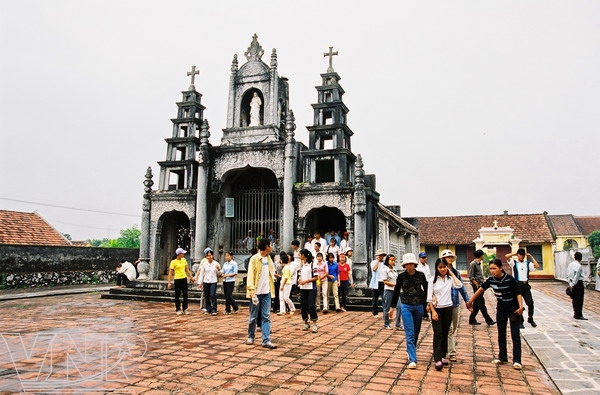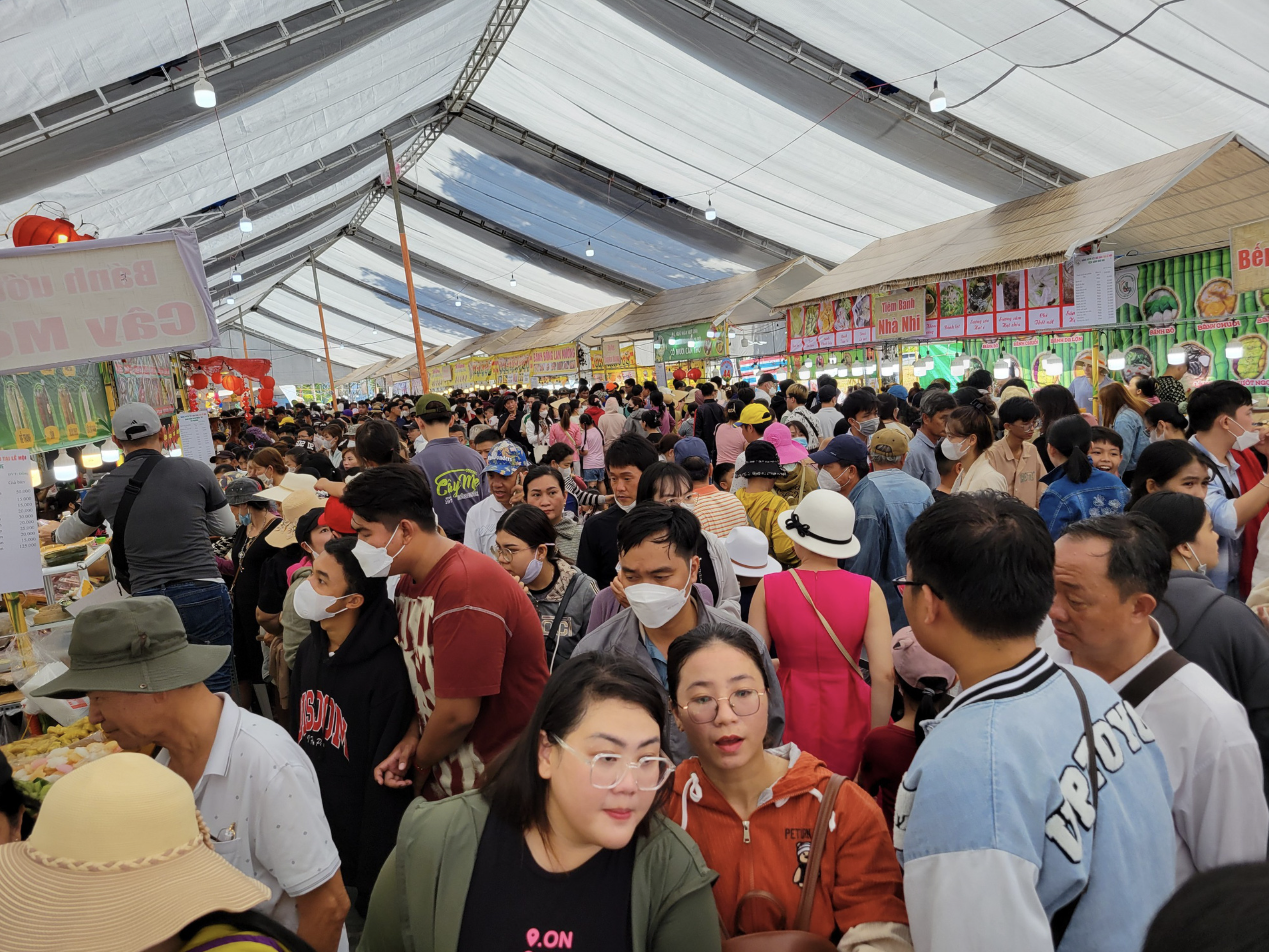Hoang Sung, a native of Thanh Hoa Province (Central Vietnam) was considered the Patron Saint of Ninh Van stone sculpture. Ninh Van is a common name of the former two old villages of Xuan Vu and He, of which He Village was the place where stone sculpturing was first practised and where an epitaph recording the merit of the craft patron saint has been preserved, stating that the Patron Saint’s death anniversary is held annually in the lunar August.
 The artisan tries to imbed his soul into the rock.  Stone sculpturing needs skilful hands of the workers.  Rocks are split into blocks before being sculptured.  Artisan Do Quang Binh designs a new model of a stone ware.  The stone cathedral in Phat Diem (Ninh Binh Province) built in 1865, a stone art work imprinted with the talent of Ninh Van stone sculptors.  500 statues of the Arhats placed at Bai Dinh Pagoda (Ninh Binh Province) made by Ninh Van artisans. |
The quarryman splits the rock into blocks, big or small depending on the would-be product, as well as calculates each piece of the product so later can be joined to another. A stone sculptor must be patient, creative and skilful and his expertise will be reflected through every detail of the product, having an artistic value. The art of stylization and realism on stone will fully manifest when a bas-relief is made from a flat stone plate with flower designs first drawn, and then engraved on the piece. Meanwhile, to make a stone statue, the artisan must cut the rock into pieces according to the product’s size and carefully calculate in detail each part of the statue, then he uses a chisel and a drill to carve its face and stance. The most important thing is that he must make his stone work become soulful. These processes take time to complete. A big statue may take a whole month to be completed.
At present, more than 80% of Ninh Van villagers partake in the craft of making stoneware, besides the dozens of artisans involved in the design work and engraving stone into fine art articles. There are more than 20 enterprises, large and small, specializing in quarrying and trading stone. Profit from stoneware making accounts for 77% of Ninh Van villagers’ total income and the business provides many jobs to the locals and contributes to making the hamlet thrive.
Photos: Phung Nam Suong



